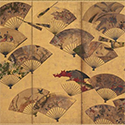|
|
| Show All 56 Results (Text Only) |
|
|
|
| Ancient Chinese Bronzes - Lesson Plan |
|
|
Chinese civilization made great advances as it emerged from the Neolithic period and entered the Bronze Age. One factor in this change was the ability to locate and extract natural deposits of copper and tin for making bronze. Foundries capable of heating the ores to high enough temperatures for mixing and casting metal were established in northern areas of China around 1700 BCE. One of the largest and most impressive early foundries was at Anyang, the capital of the late Shang dynasty from about 1300 to 1050 BCE. For more on the bronzes at the Smithsonian and how they were cast, see also Ancient Chinese Bronzes.
Go to Museum Resource: https://asia.si.edu/learn/ancient-chinese-bronzes/ | |
|
|
| Ancient Chinese Jades |
|
|
Poetically described two thousand years ago in China as the "fairest of stones," jade actually refers to two different minerals, nephrite and jadeite. All of the true jades found at ancient Chinese sites are made of fine-grained nephrite. In its purest state nephrite lacks color; impurities create the variations of yellow, green, brown, and black. See also Jades for Life and Death.
Go to Museum Resource: https://asia.si.edu/learn/ancient-chinese-jades/ | |
|
|
|
| The Art and Archeology of Ancient China: A Teacher's Guide [PDF] |
|
|
An illustrated 106-page teacher's guide that can be downloaded in .pdf format, in three parts. Go to middle of HTML page and select Part I, Part II, and Part III to download the guide. Includes historical background from China's Late Neolithic Period (BCE ca. 5000-2000) to the Han Dynasty (BCE 206-220 CE), plus a timeline, vocabulary list, pronunciation guide, four lesson plans, plus featured object studies on 1) Clothing and Personal Adornment (Silk and Jade); 2) Food Preparation and Utensils; 3) Transportation; 4) Ceremonies (Music); 5) Writing (Chinese Characters); 6) Industry (Bronze Casting); 7) Building. Also a special chapter on Ancestor Worship, then and today.
Go to Museum Resource: https://asia.si.edu/wp-content/uploads/2020/05/Art-and-Archaeology-of-Ancient-C... | |
|
|
| The Art of Buddhism |
|
|
Buddhism arose in an area bordering present-day India and Nepal. As it spread across Asia, the religion both influenced and was influenced by the religious, cultural, and artistic life of the regions it touched. The Freer Gallery of Art and Arthur M. Sackler Gallery house a major collection of Buddhist art, selections of which are on public display. This guide briefly introduces a few key points about Buddhism in India, Tibet, China, and Japan and presents examples of the majestic holdings of Buddhist art in the Freer and Sackler galleries. See also The Art of Buddhism: a Teacher's Guide [PDF].
Go to Museum Resource: https://archive.asia.si.edu/exhibitions/online/buddhism/default.htm | |
|
|
| The Art of Sotatsu |
|
|
Discover Tawaraya Sōtatsu, one of the most influential yet elusive figures in the history of Japanese visual culture. Sōtatsu: Making Waves is the first exhibition outside Japan to tell his story—a once-in-a lifetime experience in which two of the artist’s most important paintings, the Freer’s Waves at Matsushima and Dragons and Clouds, were on view. Also see their Sōtatsu Pinterest page and Sotatsu’s Waves at Matsushima (Teaching poster) [PDF] - Tawaraya Sōtatsu (act. ca. 1600–40). Japan, early 1600s. Pair of six-panel folding screens. Ink, color, gold, and silver on paper.
Go to Museum Resource: https://asia.si.edu/exhibition/sotatsu-making-waves/ | |
|
|
|
| Show All 56 Results (Text Only) |








